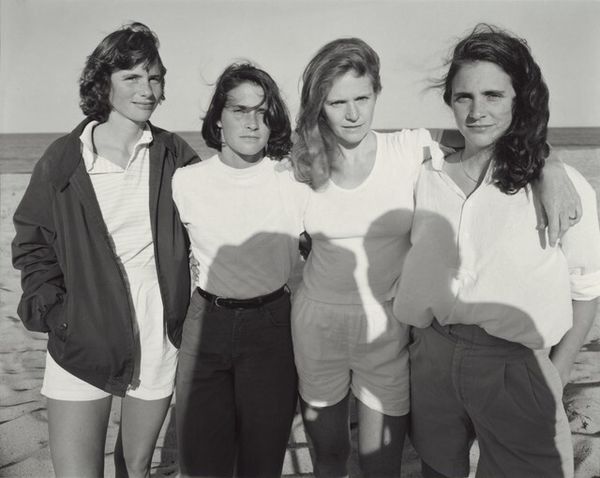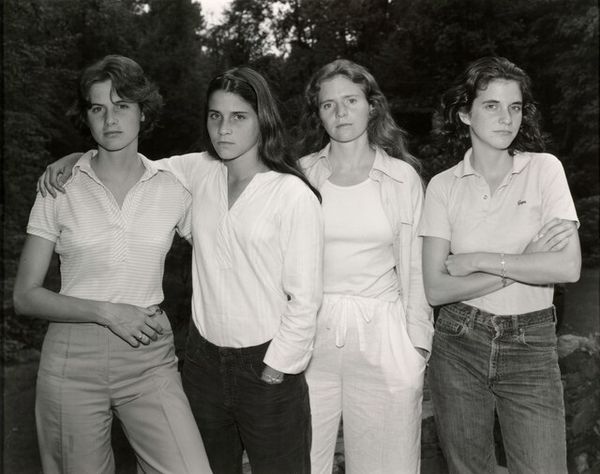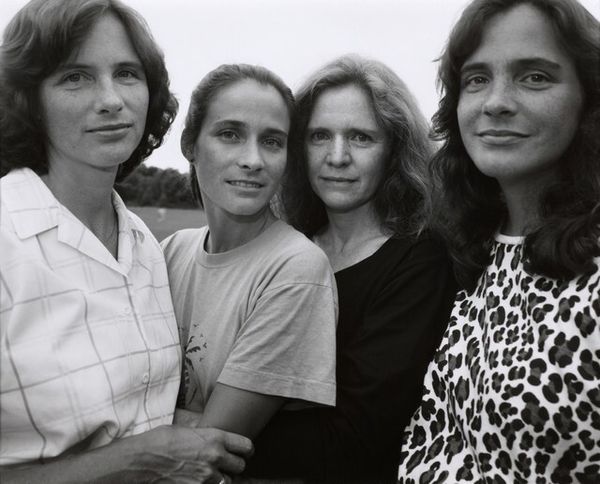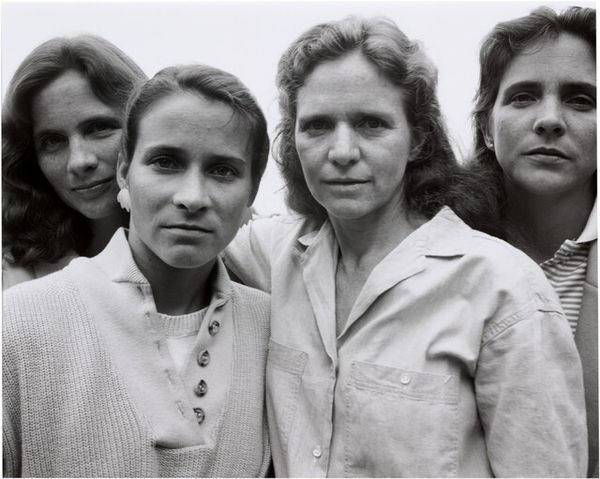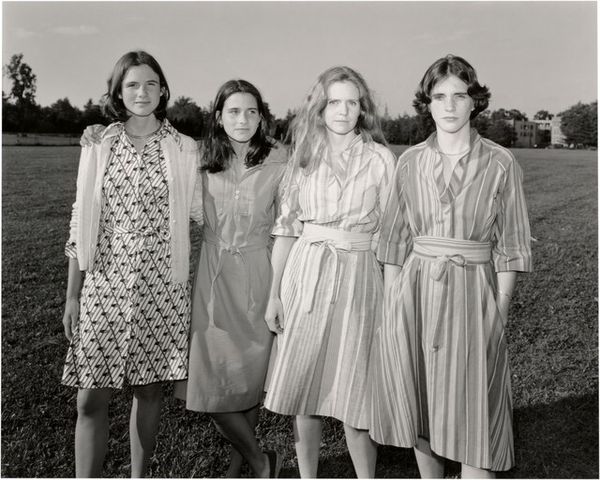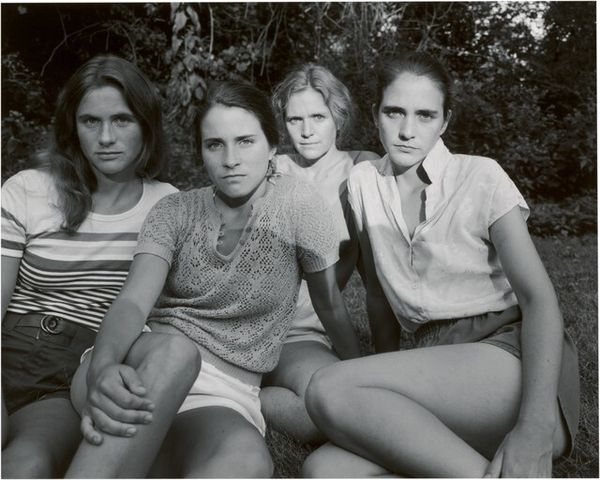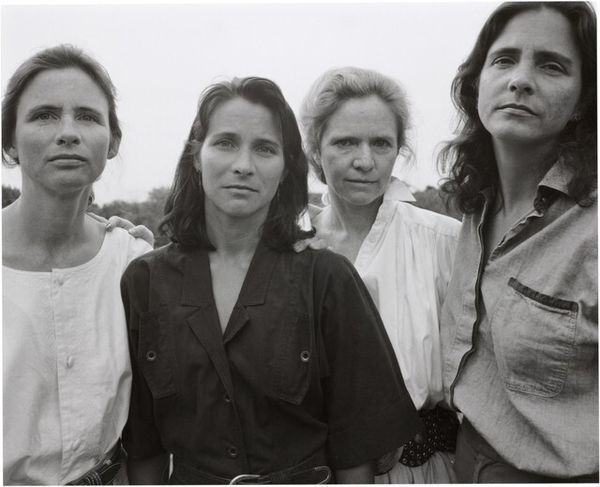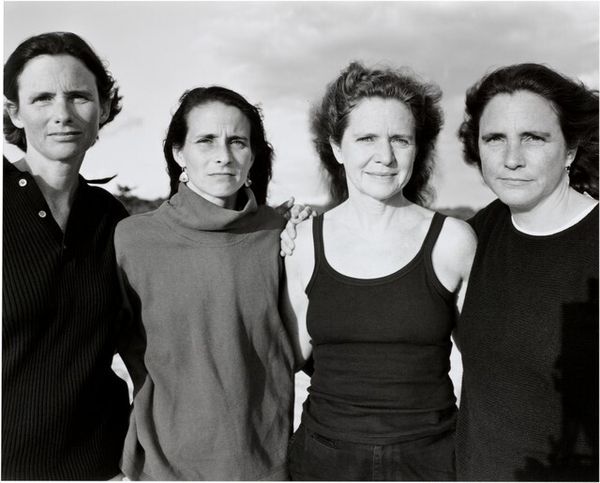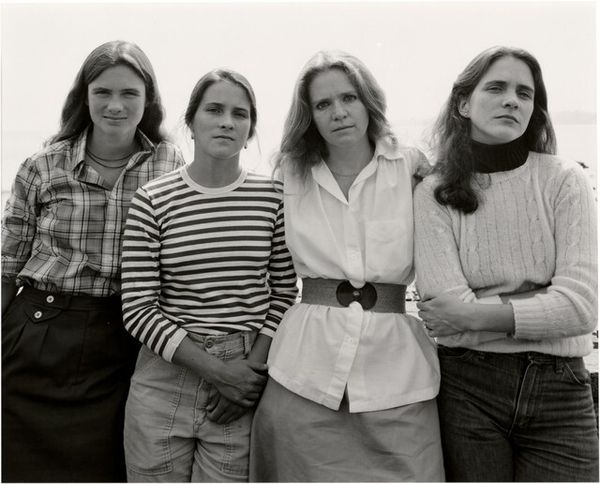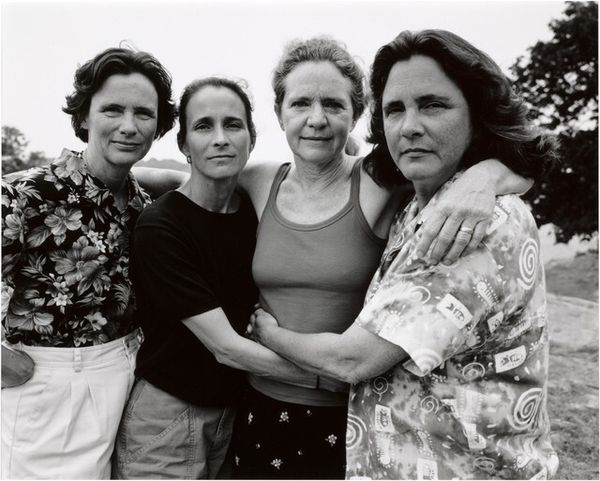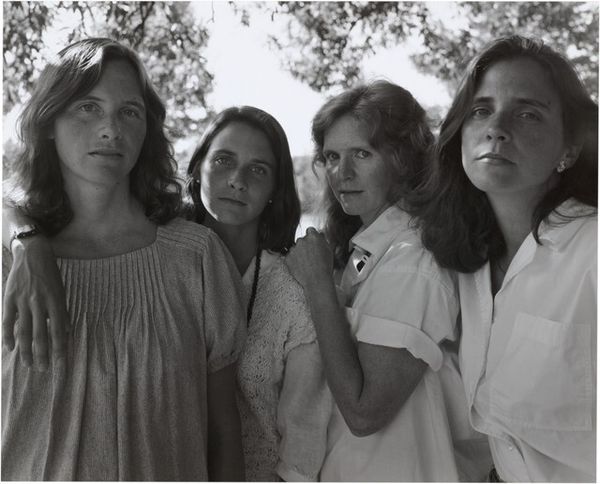
photography, gelatin-silver-print
#
portrait
#
contemporary
#
photography
#
group-portraits
#
gelatin-silver-print
#
group photography
#
portrait photography
Dimensions: sheet: 20.2 x 25.2 cm (7 15/16 x 9 15/16 in.)
Copyright: National Gallery of Art: CC0 1.0
Editor: Here we have Nicholas Nixon's "The Brown Sisters, East Greenwich, Rhode Island," a gelatin-silver print from 1980. It’s a black and white portrait of four sisters. The mood is…stark. Very direct. What strikes you about this piece? Curator: Well, what immediately grabs me is the long-term commitment. Nixon photographed these sisters every year for over forty years. It's not just a single portrait, but a decades-long exploration of aging, familial bonds, and the evolving role of women in society. Do you think it functions like a time capsule? Editor: Definitely, and I hadn’t thought of it that way. I suppose seeing them develop over time gives the project its power, but this first photograph of the series intrigues me because there isn’t that baggage, or knowledge, associated with it yet. Curator: Precisely. Here, we see them within the context of 1980s America. Think about the evolving roles of women during that era and how portraiture either reinforces or subverts those social expectations. It seems intimate, immediate…unburdened. Consider the setting—East Greenwich, Rhode Island. How does this New England context play into our reading of the sisters’ representation? Is this intended to be an “average” or “typical” portrayal of American women, do you think? Editor: Maybe, but even as a photograph that introduces a decades-long project, I do wonder what that context will ultimately bring the photograph’s public interpretation over time. It will have its own life in the world! Curator: Exactly. It’s about that dynamic interplay – the evolving social role of women captured within the institutional setting of art. Photography had to work to achieve legitimacy. A project like this, shown in museums, gives everyday subjects, such as these women, significance beyond their immediate lives. How fascinating! Editor: I’ve certainly never thought of it that way before! Thank you.
Comments
No comments
Be the first to comment and join the conversation on the ultimate creative platform.

